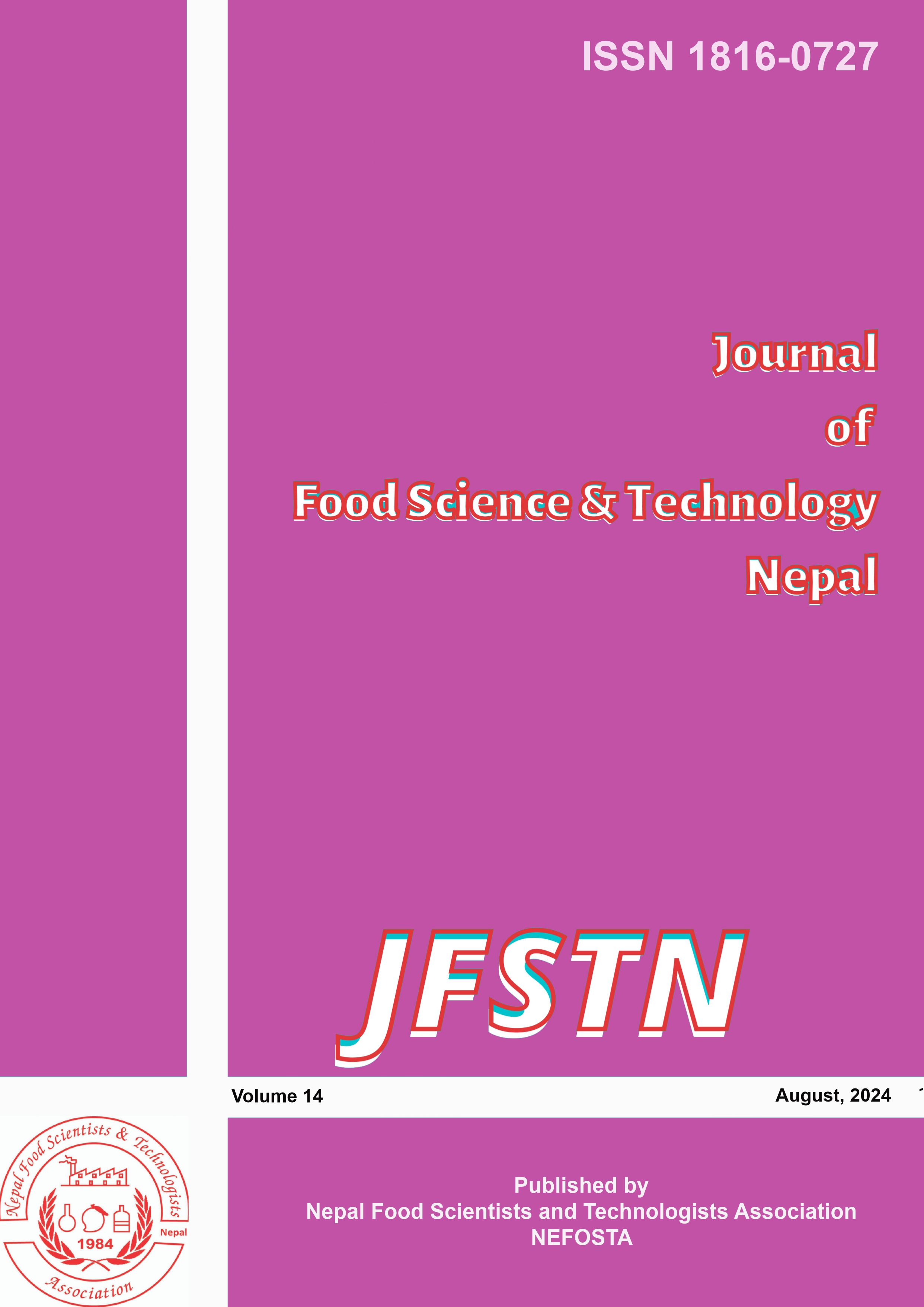Cabinet Drying: a Better Method for Dehydration of Sweet Orange Slices Delivering High Quality Product With Superior Health Promoting Properties
DOI:
https://doi.org/10.3126/jfstn.v14i14.71711Keywords:
Sweet Orange, Physiochemical property, Bioactive componentsAbstract
The main aim of this research was to determine the best method for dehydration of sweet orange slices with peel and without peel, that will not only enhance the shelf life of sweet orange but also add value to it. Two dehydration method cabinet drying (drying at 60 ⁰C for 24 hours) and solar drying (drying under sunlight for 7 days) were tested. Prior to dehydration, the sweet oranges were washed with 200 ppm sodium hypochlorite solution for 1 minute to decrease the microbial population and the
slices were treated with 1% sodium meta-bisulphite solution as a food preservative and enzyme inactivator. The physiochemical properties and bioactive components of the dried sweet orange slices were analyzed. The bioactive components such as ascorbic acid, polyphenol and antioxidant as well as physiochemical components such as acidity, reducing sugar, iron and phosphorous were significantly higher (p<0.5) in cabinet dried sweet orange slices in both cases (with and without peel) compared to solar dried sweet orange. Therefore, the cabinet drying is recommended for commercial drying of orange slices, which will deliver dried products with high quality and considerably enhance its commercial value.
Downloads
Downloads
Published
How to Cite
Issue
Section
License
The author will be the copyright holder of this open access journal - 'Journal of Food Science and Technology Nepal (JFSTN)'.




